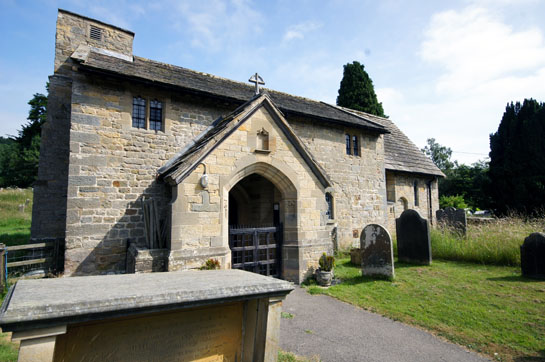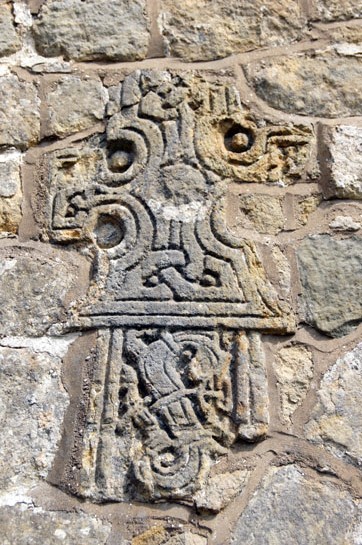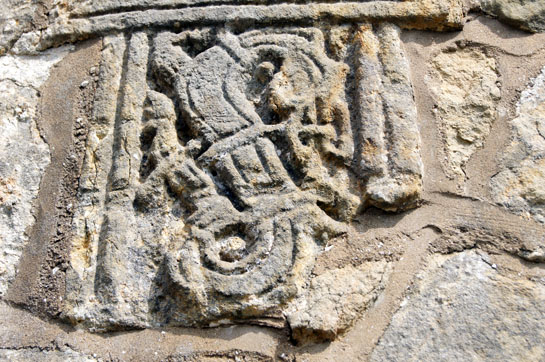|
|
||||||||||||||||||||||||||||||||||||||||||||||||||||||||||
|
Please sign my Guestbook and leave feedback |
||||||||||||||||||||||||||||||||||||||||||||||||||||||||||
|
Recent Additions |
||||||||||||||||||||||||||||||||||||||||||||||||||||||||||
|
|
||||||||||||||||||||||
|
The pre-Conquest carved fragments that have been built into the walls indicate that there was there was Christian worship in the vicinity before that date but that’s as much as we can know. Very simply, there is nothing else here to show whether the church was late Anglo-Saxon or early Norman - or for that matter commissioned in the Norman period and built by Anglo-Saxon masons. Personally, I think it is pre-Conquest, not least because of the high roofline characteristic of that period. At various times since its building, a south chapel has been both built and demolished, most of the windows have been replaced and in the c19 a rather gruesome bellcote was added. It is not the architecture of this church that is of interest, however, but the plethora of carved fragments built into the church walls and which predate the church itself. |
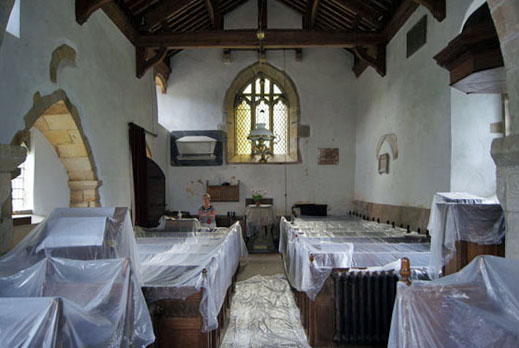 |
|||
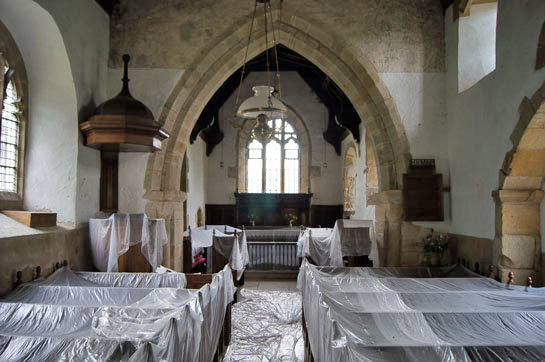 |
|||
|
The sorry scene inside the church when we visited in 2013. Outrageous? I think so even though I love bats and believe they deserve protection. Left: Looking towards the chancel. The gothic arch will have replaced an original Romanesque round one. The arch springs from the original piers so it is not difficult to imagine that the original semi-circular arch was very much lower and that the roof was, therefore, proportionally much higher - as would be expected if this were indeed an Anglo-Saxon church. Right: The view to the west. To the left is the entrance to the south chapel probably of the fourteenth or fifteenth centuries that has been long since demolished. Above it are the traces of a filled-in Anglo-Saxon or Norman window. To the right is the blocked north doorway that also looks to have been part of the original fabric. Diana surveys the scene from a place where she can quickly get some clean air. |
 |
|||
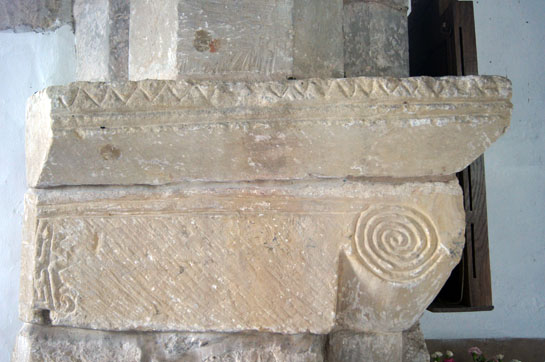 |
|||
|
The chancel arch capitals are extremely crude. Spirals are the predominant decoration at this church - a decorative form almost as old as mankind. Note in the picture left there are vestiges of carving that suggest that the rest has been defaced at some time. |
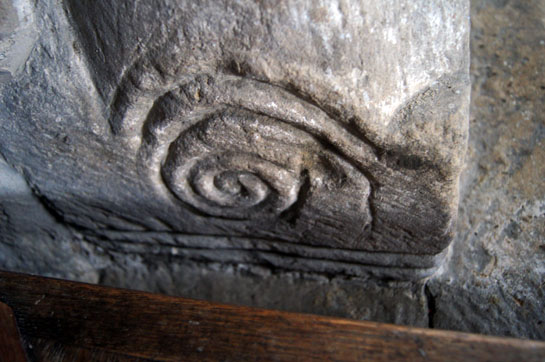 |
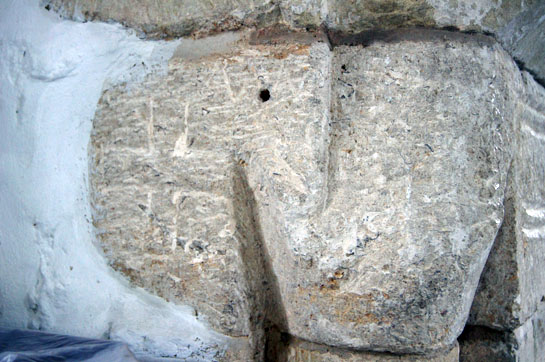 |
||||||
|
Left: More spirals, this time at the foot of a pier. Right: One of the chancel arch capitals has a cross inscribed. |
|||||||
 |
|||||||
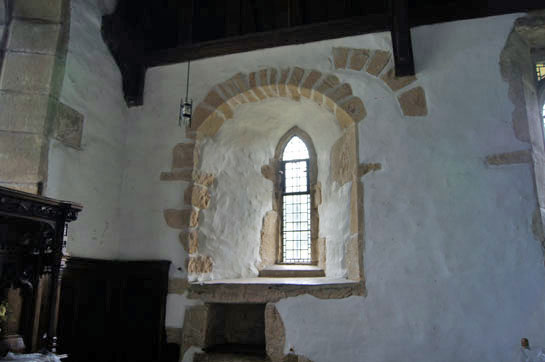 |
|||||||
|
Left: A deeply splayed thirteenth century lancet window at the east end of the chancel with signs of an older window opening. Right: The blocked north door. |
|
|
||||||||||||||||||||||||||||
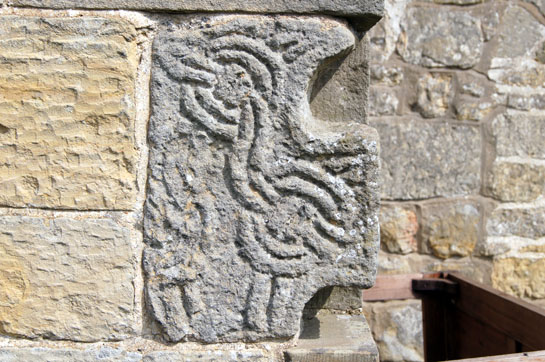 |
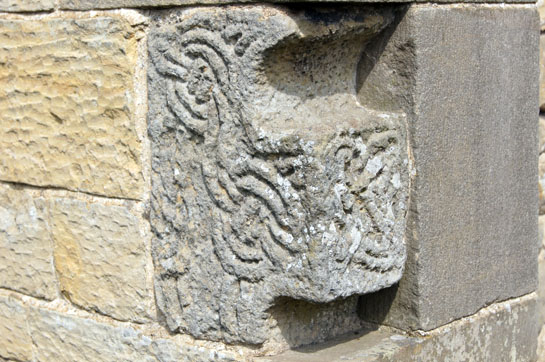 |
||||||||||||
|
Left and Right: Another Scandinavian cross head built into the walls. |
|||||||||||||
 |
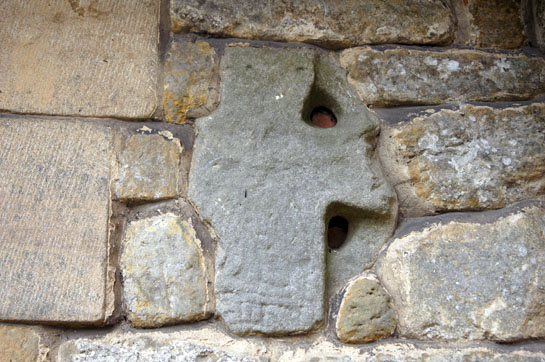 |
||||||||||||
 |
|||||||||||||
 |
|||||||||||||
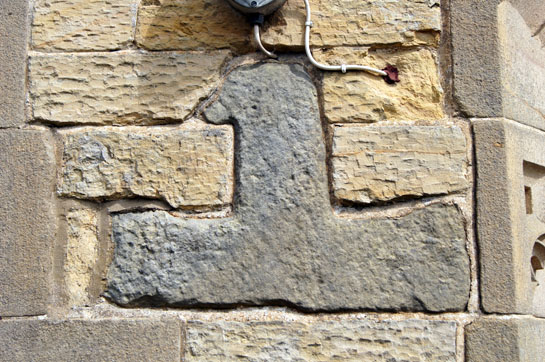 |
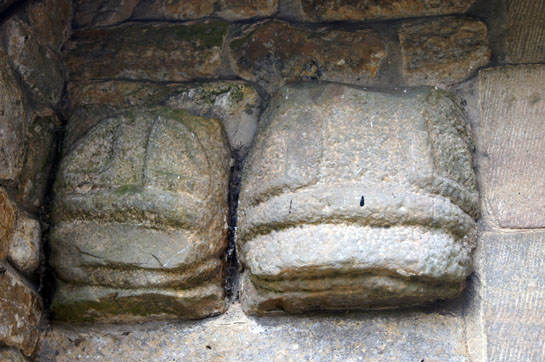 |
||||||||||||
|
Six more fragments built into the walls. |
|||||||||||||
 |
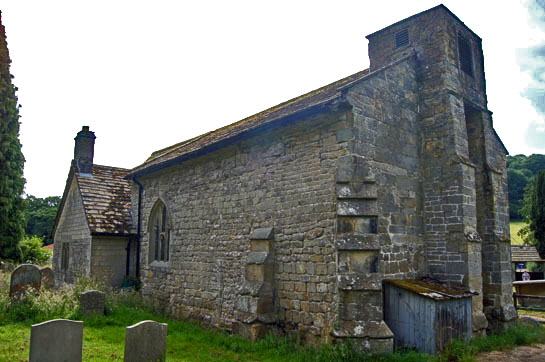 |
||||||||||||
|
Left: The church seen from the south east. Note the eclectic mix of windows and also the filled in priest’s door. Right: The north east aspect. Note the far fewer windows and the unpleasant (but surely necessary!) buttresses. |
 |
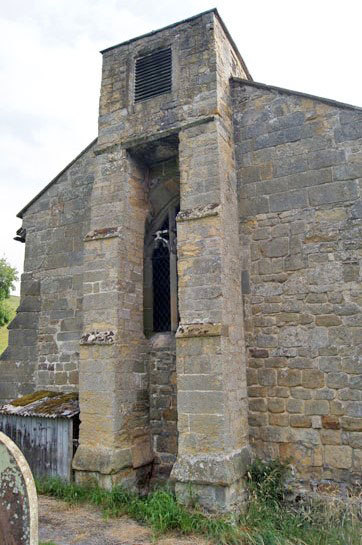 |
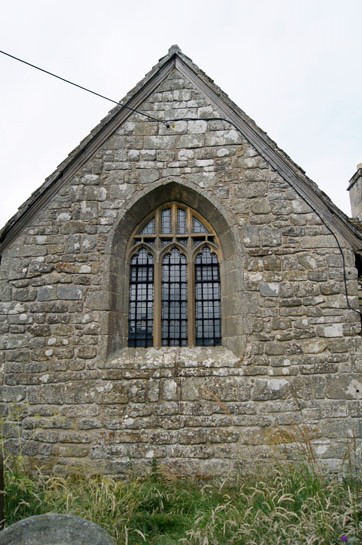 |
|
Left: This ancient doorway is in the north side of the chancel and leads to a modern vestry. What did it lead to originally? This tiny church has three other external doors including another on the north side so the vestry may have replaced an older room. Centre: The rather grim west end. Buttresses flank the rather forlorn-looking west end. Above it there is a closed-in bellcote which looks like it has air conditioning louvres! Right: The east end with its fifteenth century window. |
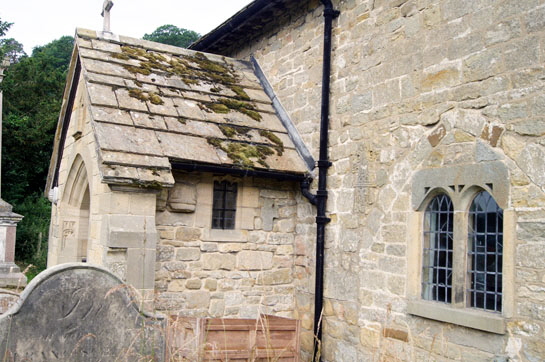 |
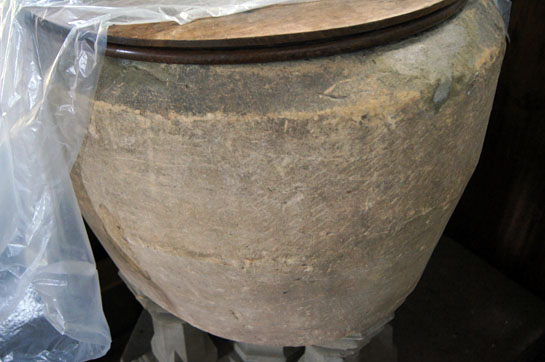 |
||||||||||||||||||
|
Left: Around the rectangular window to the right you can see the opening to the lost south chapel. Just to the left of that arch you can just see the Jellinge cross. The south porch can be seen to incorporate ancient stones both to the left and right of the small window. Above: Fonts don’t come any plainer than this. It is a tub font and could be Anglo-Saxon or Norman but certainly not later. |
|||||||||||||||||||
|
Footnote 1 - The “Jellinge Style” |
|||||||||||||||||||
|
If you are one of those people who would often be hard-pressed to differentiate between Anglo-Saxon, Celtic, Scandinavian and Norman decoration then join the very large club of which I am a member! In England pre-Conquest decorative styles tend to be lumped together as “Celtic” and I think the jewellery industry has to take some responsibility for this. They are forever concocting fanciful interlaced designs for necklaces or brooches and airily describing them as “Celtic Style”. There’s no harm in this, of course, but it is a bit frustrating. Anyway, the ornate cross-head at Ellerburn is reckoned to be Scandinavian and in the “Jellinge Style”. The name derives from a single silver cup found in the funeral mound of one King Orm in Jellinge in Denmark. It is characterised by animals with their heads in profile and with ribbon-shaped bodies pigtails€¯ and curling upper lips. It comes slightly later than the “Barre Style” but the two styles overlap chronologically: 880-1000 for Jellinge and 840-970 for Barre. The Barre Style is described thus by the British Mueoum: “More or less symmetrical animals with full-face, cat-like, triangular heads, large round eyes and prominent ears are typical of the style. They are often shown with arched, ribbon bodies, their paws gripping their own necks and limbs and surrounding frames, like the so-called Gripping Beast of earlier styles”. So now you know! |
|||||||||||||||||||
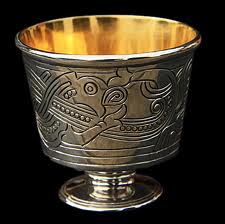 |
 |
||||||||||||||||||
|
Left: The Jellinge Cup Right: A Borre style jewel. Note the creature is shown full-faced and with protruding ears. |
|||||||||||||||||||
|
Footnote 2 - The Bat Saga |
|||||||||||||||||||
|
Bats are wonderful creatures and they need protecting. True, most of us rarely see one and it’s also true that the draconian laws that protect them mean that you wouldn’t wish a bat roost on your worst enemy. Nevertheless, our lives are made poorer by the extinction or geographical marginalisation of native species. I have to say, however, at the risk of offending bat lovers everywhere that the condition of Ellerburn Church when we visited was absolutely deplorable and my heart went out to those who had to watch their one thousand year old place of worship rendered unusable in this way. I suppose the solution was a Solomon-like compromise and I hope it works for the parishioners and the bats. For anyone wanting to know more about this sorry saga, I suggest following these two links: http://www.telegraph.co.uk/news/religion/8724984/A-church-closed-by-roosting-bats.html. I think you can see which side the Daily Telegraph was on. http://www.nybats.org.uk/page18.htm. This is the North Yorkshire Bat Group’s response. I can’t help picking out the following paragraph: “North Yorkshire Bat Group does not dispute that the bats roost in the roof of the building from where they have direct access to the exterior. However, we do not agree that the bats do not need to access the interior. At dusk some of the bats make considerable effort to access the inside of the church from their roost sites in the roof, fly around inside the building for a lengthy period of time and then make considerable efforts to exit the building at the eaves. Just because we don't know why they do this or what subset of the population exhibits this behaviour does not mean that it does not serve some important function to the bats”. Make your own judgement. Update: January 2018. Mike Stallybrass has given me this information : “Ellerburn successfully got English Heritage to change their national policy regarding bats. It took them several years, but EH ended up funding most of the work that was needed, including a deep, deep clean of the whole building before a wedding”! So the saga seems to have played out satisfactorily in the end - after a years of posturing, fuss and nonsense that characterises so much of British life nowadays. SO YOU CAN NOW VISIT THIS CHURCH WITHOUT RISKING ASPHYXIATION OR NAUSEA. |
|||||||||||||||||||
|
|
|||||||||||||||||||
